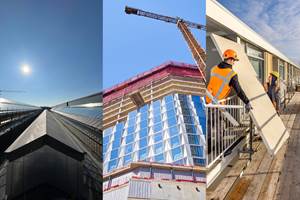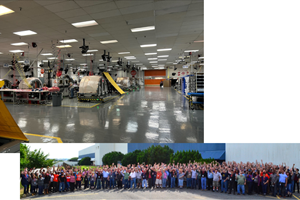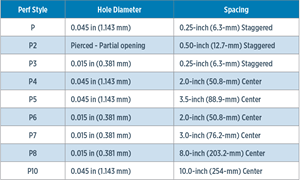Hexcel third quarter financials reflect industry headwinds
Slowdown in commercial aerospace and the wind energy market has decreased Hexcel’s year-to-date sales by 32.6%. The company will close its wind energy glass fiber prepreg line in Windsor, Colo., U.S., in early November.

Photo Credit: Hexcel
Hexcel Corp. (Stamford, Conn., U.S.), the world’s second-largest manufacturer of carbon fiber and a major supplier of prepregs, core materials, resins and other materials, reported third quarter 2020 results on Oct. 19, including net sales of $286.9 million, which were about half of net sales of $572.5 million from third quarter 2019. Hexcel’s sales for the first nine months of 2020 are $1.207 billion, down 32.6% in constant currency compared to the same period in 2019.
Hexcel, like much of the composites industry, is experiencing reduced demand for its products caused by the COVID-19 pandemic. Particularly hard hit is the commercial aerospace industry. Hexcel is also experiencing losses in the wind energy market, which has compelled the company to close its glass fiber prepreg plant in Windsor, Colo., U.S., effective in early November. The Windsor facility is adjacent to and supplies material for a Vestas wind blade plant located there.
Nick Stanage, chairman, CEO and president of Hexcel, says, “In the third quarter of 2020, Hexcel faced significant headwinds resulting from the current unprecedented decline in demand impacting our industry. Sales were half of 2019 levels, and adjusted EPS was a negative 29 cents. We have taken rapid and significant actions over the past several months to cut overhead costs and reduce employment costs to align with demand levels lowered due to the effects of the pandemic. Together, these actions have reduced annualized overhead costs by more than $150 million and will better position us over the next several quarters as we adjust to build rate reductions announced by our key customers, compounded by extensive supply chain adjustments. Our foundation remains strong as demonstrated by $76 million of free cash flow generated in the third quarter, resulting in $109 million of free cash flow year to date, further strengthening our strong balance sheet.
“As the year has progressed, the dramatic downturn especially in the commercial aerospace market has become clearer and, as a result, we believe these channel adjustments will take another two to three quarters to work through the system. We are staying close to our customers to understand their forecasts and to align with changing demand.
“As we look toward 2021, we will continue aligning our costs with projected sales and take swift actions to ensure that we continue delivering value to our shareholders now and well into the future. The overall long-term demand for aircraft and our advanced composites technology remains robust, and the potential for a significant upturn in 2022 and beyond looks positive. The actions we are taking will ensure that Hexcel emerges from the effects of this pandemic stronger than ever. As we do, our liquidity will have been strengthened, our cost structure will be reset and we will be well-positioned to deliver strong shareholder returns.”
Summary of Hexcel revenue, by market
Commercial aerospace:
-
Commercial aerospace sales of $128.8 million decreased 66.6% for the quarter compared to third quarter 2019. Commercial aerospace YTD sales of $695.6 million decreased 42.9% in constant currency compared to the first nine months of 2019. All major programs were down substantially with the largest sales impact related to the Airbus A350. Boeing 737 MAX sales continue to be at a very low level. Build rate reductions driven by the COVID-19 pandemic combined with significant supply chain inventory destocking led to the reduced sales levels. Additional build rate reductions publicly announced at the end of July 2020 by Airbus and Boeing is further extending the impact of supply chain destocking.
-
Sales to other commercial aerospace, which include regional and business aircraft, fell by 49.6% third quarter 2020 compared to third quarter 2019. YTD sales have decreased 23.5%.
Space and defense:
- Space and defense sales of $108.8 million decreased 0.9% for the quarter as compared to 2019. YTD space and defense sales of $328.8 million were essentially unchanged in constant currency compared to the first nine months of 2019. The small quarterly decrease, says Hexcel, was due to lower demand from a number of European space and defense programs; aggregate U.S. space and defense sales were up moderately in third quarter 2020 compared to third quarter 2019.
Industrial:
-
Total industrial sales of $49.3 million in the third quarter were down 35.8% compared to third quarter 2019. YTD industrial sales of $182.2 million decreased 25.1% in constant currency compared to the first nine months of 2019.
-
Wind energy sales (the largest submarket) experienced a decline of 41.5% in constant currency compared to third quarter 2019. The reduction reflects a customer demand shift in the U.S. market. As a result of this demand change, Hexcel says it will close its wind energy glass fiber prepreg production facility in Windsor, Colo., U.S. in early November 2020. The Hexcel wind material prepreg production facility in Austria that serves the European market and the wind material facility in China that serves the Asian market continue to operate to produce materials for wind energy customers.
Related Content
Bio-based, fire-resistant composites become mainstream
Projects use Duplicor prepreg panels with highest Euroclass B fire performance without fire retardants for reduced weight, CO2 footprint in sustainable yet affordable roofs, high-rise façades and modular housing.
Read MoreReducing accidental separator inclusion in prepreg layup
ST Engineering MRAS discusses the importance of addressing human factors to reduce separator inclusion in bonded structures.
Read MoreUnderstanding vacuum bagging layers in production, repair
Recognizing the functions of each layer in a vacuum bag schedule can help users discover what vacuum bag schedules work best for their application.
Read MoreCarbon fiber, bionic design achieve peak performance in race-ready production vehicle
Porsche worked with Action Composites to design and manufacture an innovative carbon fiber safety cage option to lightweight one of its series race vehicles, built in a one-shot compression molding process.
Read MoreRead Next
VIDEO: High-volume processing for fiberglass components
Cannon Ergos, a company specializing in high-ton presses and equipment for composites fabrication and plastics processing, displayed automotive and industrial components at CAMX 2024.
Read MoreAll-recycled, needle-punched nonwoven CFRP slashes carbon footprint of Formula 2 seat
Dallara and Tenowo collaborate to produce a race-ready Formula 2 seat using recycled carbon fiber, reducing CO2 emissions by 97.5% compared to virgin materials.
Read More“Structured air” TPS safeguards composite structures
Powered by an 85% air/15% pure polyimide aerogel, Blueshift’s novel material system protects structures during transient thermal events from -200°C to beyond 2400°C for rockets, battery boxes and more.
Read More

























